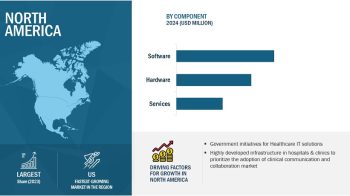The home healthcare market in the Asian region is currently in the nascent stage. However, factors such as the rapidly increasing geriatric population, growing adoption of Information and Communication Technology (ICT), technological advancements, increasing disposable income levels, expansion of home healthcare companies in several Asian countries, increasing need for affordable treatment options due to rising healthcare costs, and government initiatives to promote home healthcare are expected to drive the growth of the Asian home healthcare market.
The key players in this market are increasingly adopting business growth strategies such as new product launches, partnerships, agreements, joint ventures, collaborations, acquisitions, and expansions to strengthen their positions in the market.
The Asian home healthcare market is segmented based on products, services, telehealth, and countries. Based on services, the market is further segmented into rehabilitation therapy services, infusion therapy services, unskilled care services, respiratory therapy services, pregnancy care services, skilled nursing services, and hospice and palliative care services. The infusion therapy services segment is expected to provide lucrative growth opportunities for market players in the forecast period. Factors driving growth in this segment include growing incidence of chronic diseases, rising geriatric population, development of infusion devices and their growing application, increasing use of ambulatory infusion pumps and specialty infusion therapy, and growing research in the field of pain relief.
Based on products, the market is further segmented into testing, screening, and monitoring products; therapeutic products; and mobility products. Mobility products segment is expected to provide lucrative growth opportunities for market players in the forecast period. Factors driving growth in this segment include rising incidences of chronic diseases, growing geriatric population, rising number of elderly people suffering from orthopedic impairments, and technological advancements.
The telehealth services segment is expected to grow at the highest rate in the forecast period. Growth in this segment can primarily be attributed to increasing government initiatives to promote the use of telehealth services, increasing adoption and utilization of telecommunication technologies in healthcare, and easy accessibility of telehealth, especially in rural areas where access to hospitals is limited.
Based on countries covered in this study, the Asian home healthcare market is segmented into Japan, China, India, and countries in the Rest of Asia (RoA). China and India are the new revenue pockets for the home healthcare market players. The high growth opportunities in these countries is primarily attributed to the rapidly increasing aging population, technological advancements, expanding middle-class income, underdeveloped healthcare infrastructure, government initiatives to promote home healthcare, rising incidences of chronic diseases, shift from treatment-oriented approaches to preventive approaches, and the need to reduce healthcare costs, which has driven the demand for affordable healthcare delivery.

